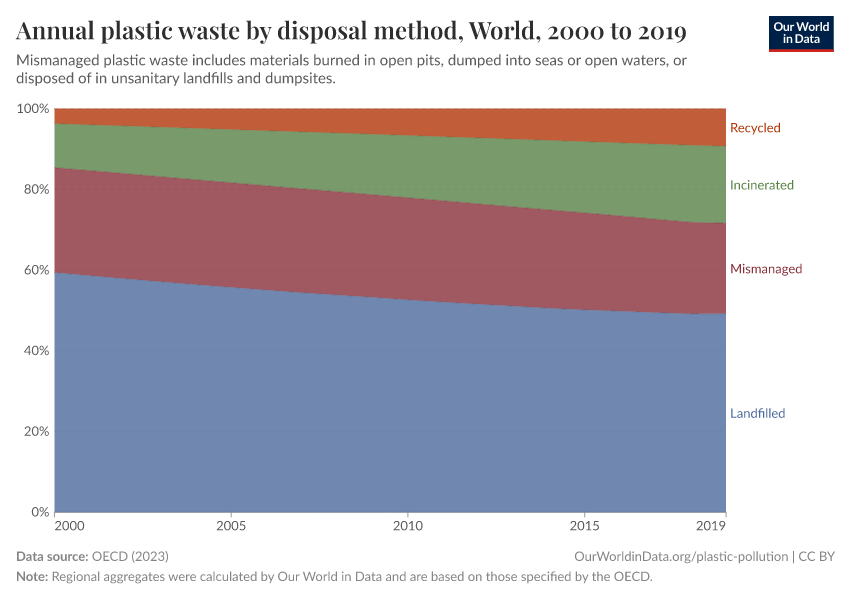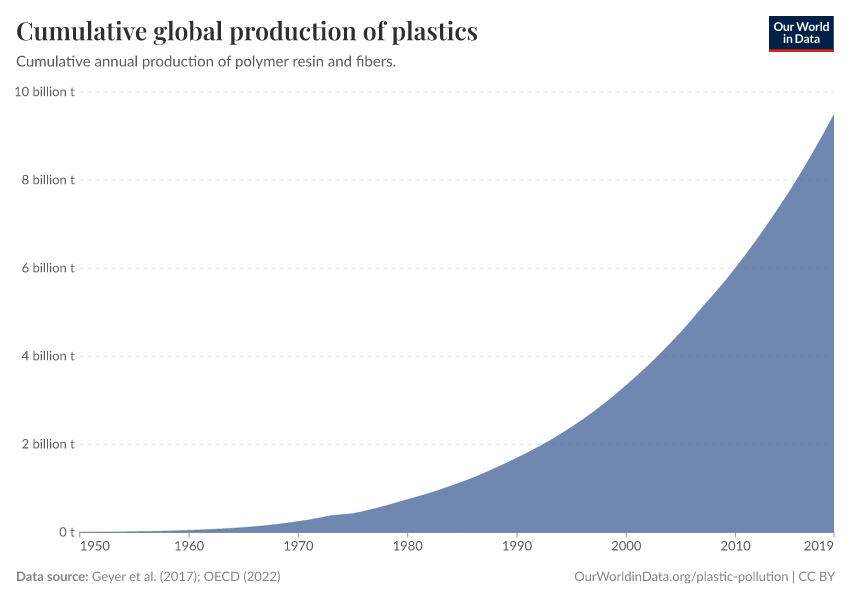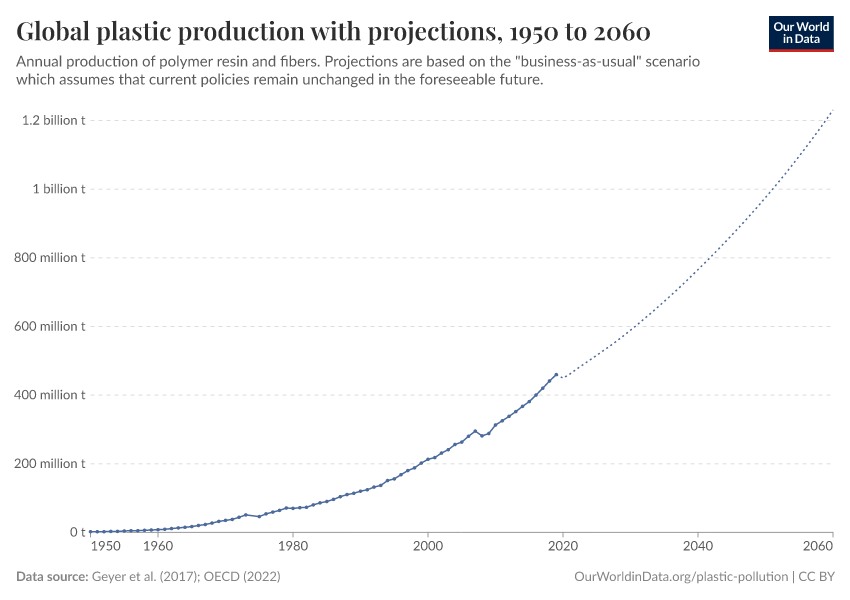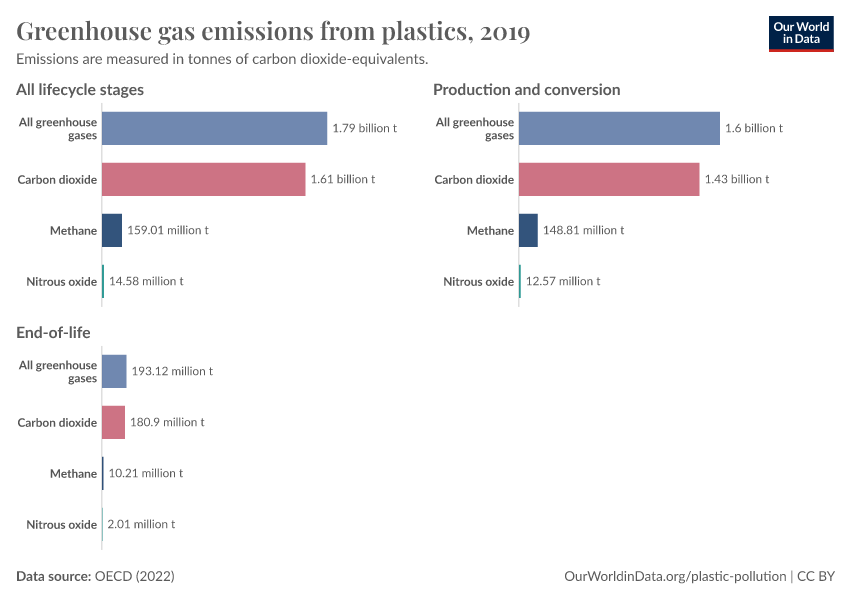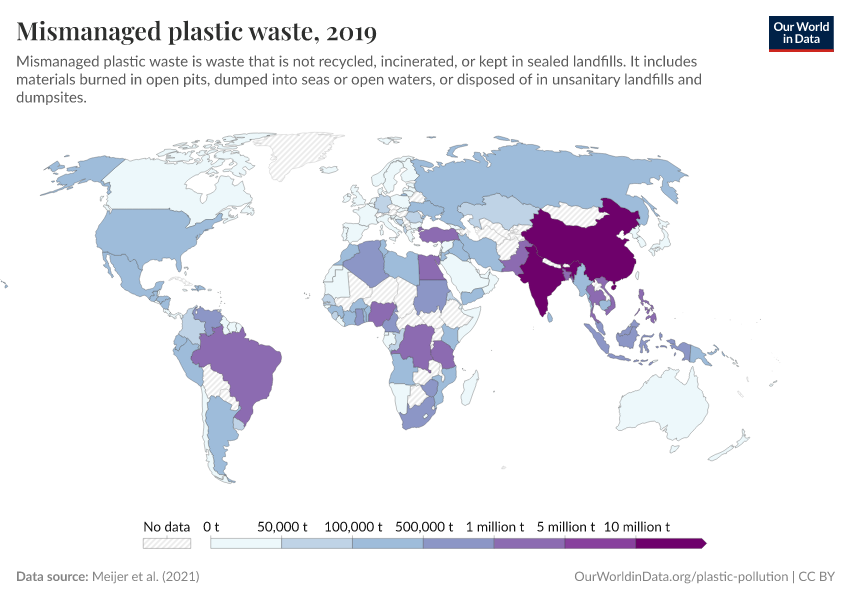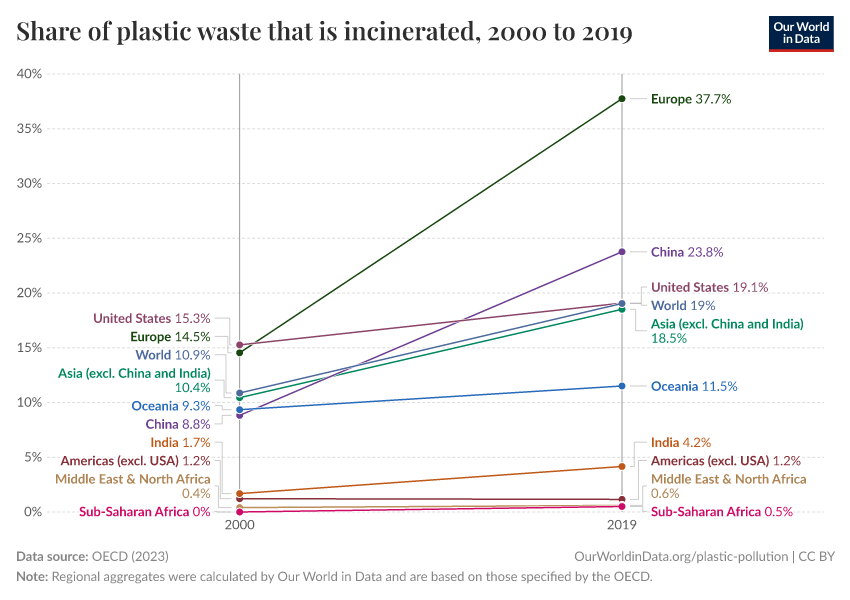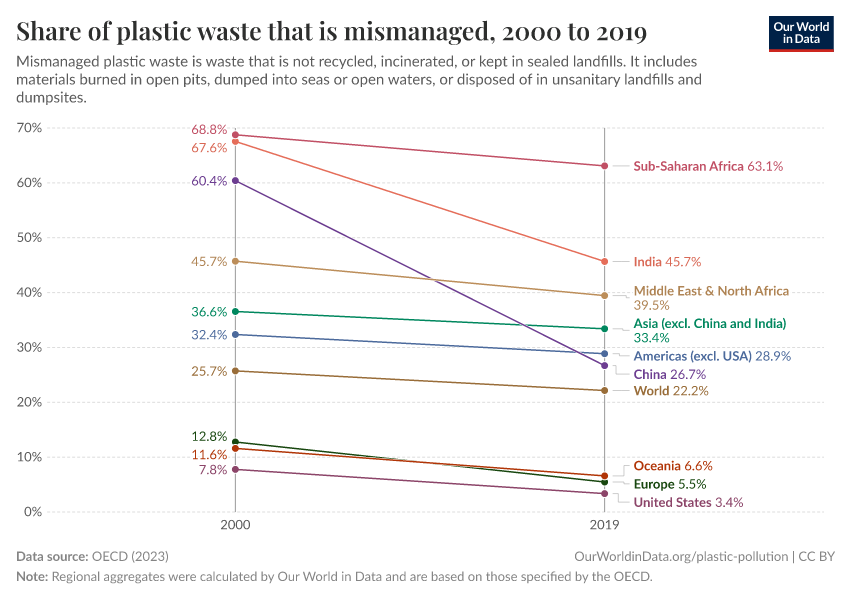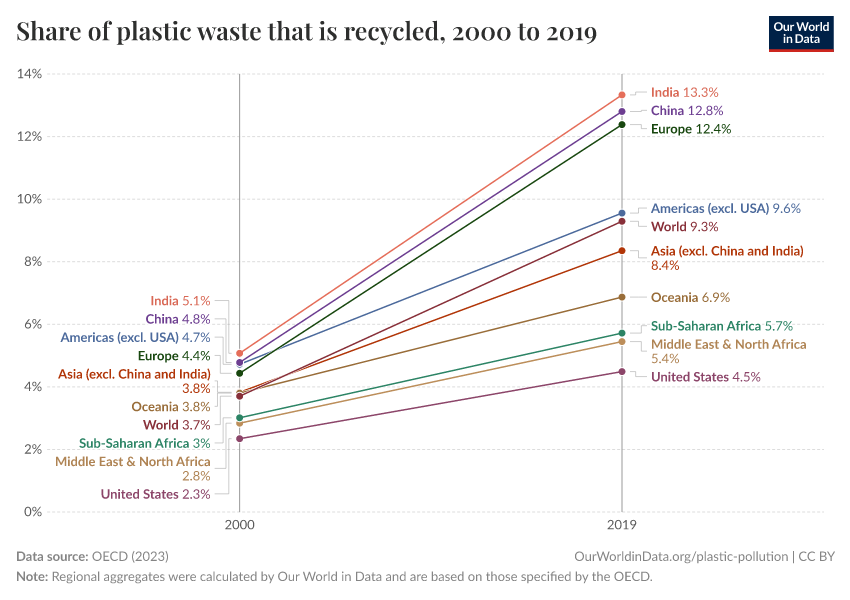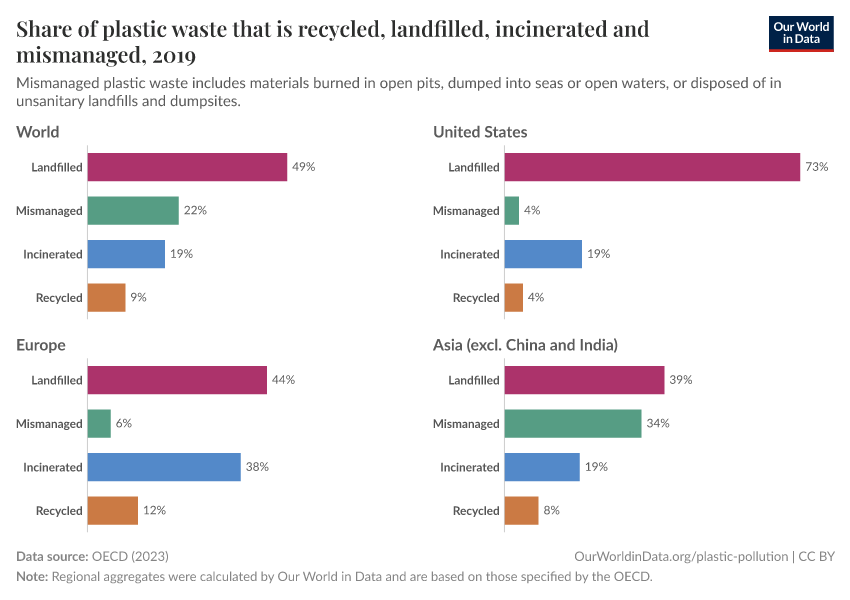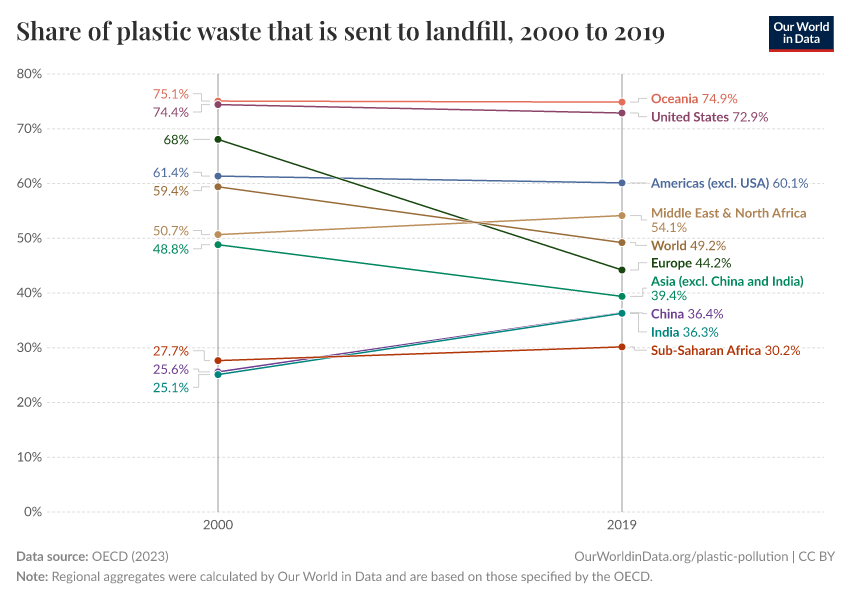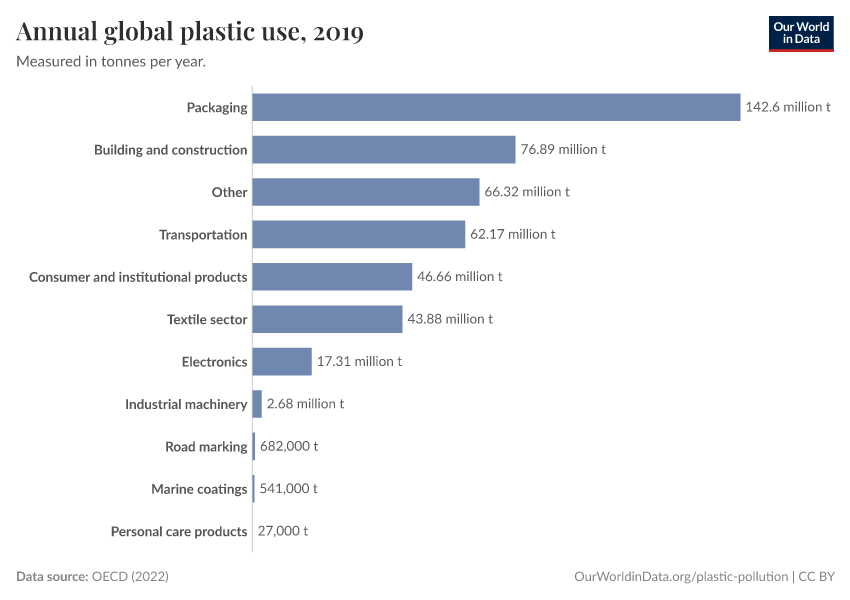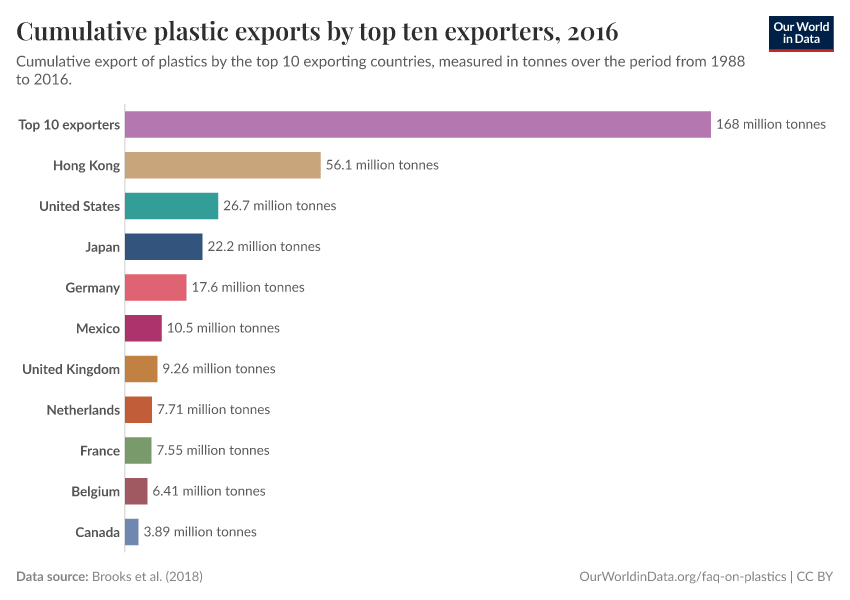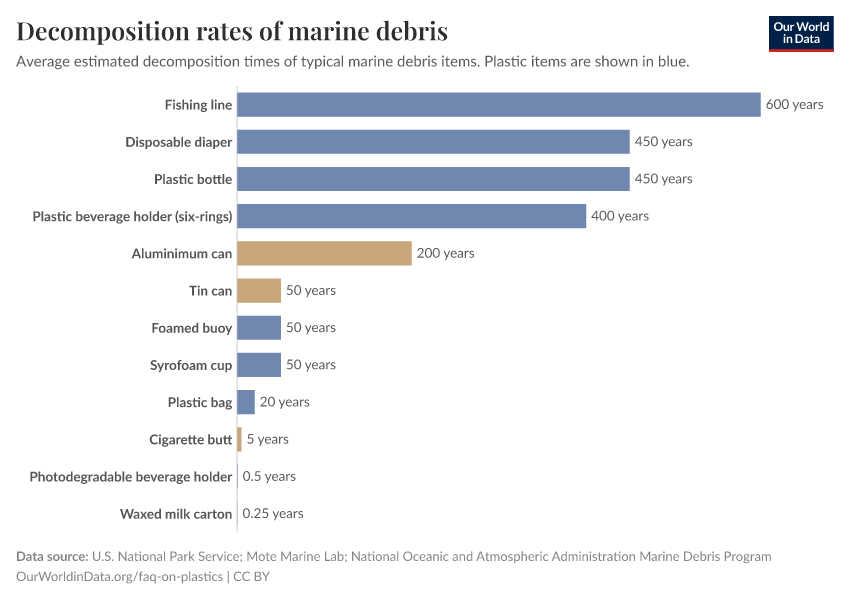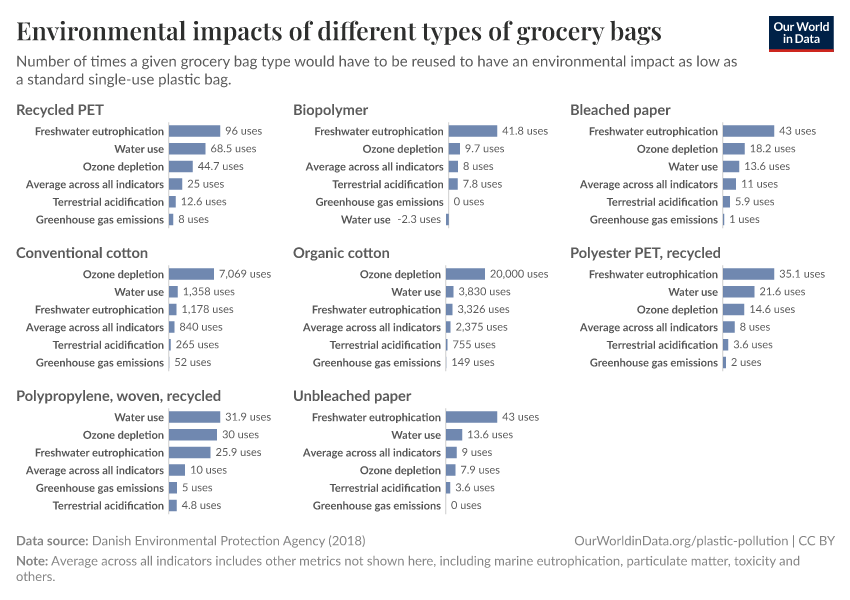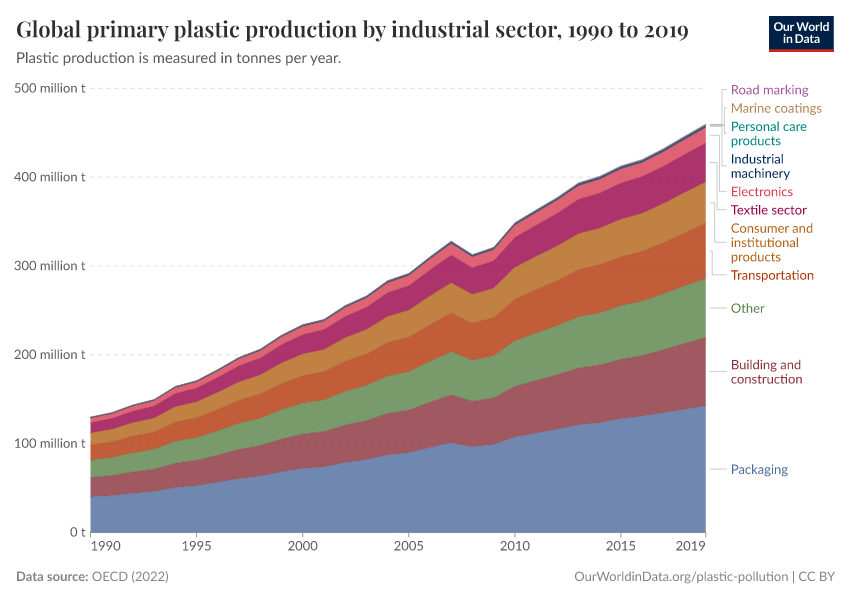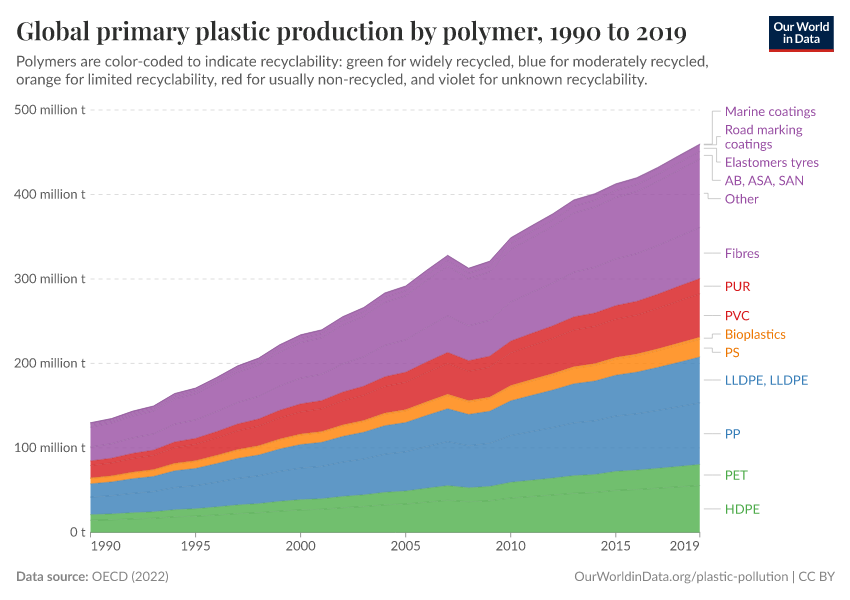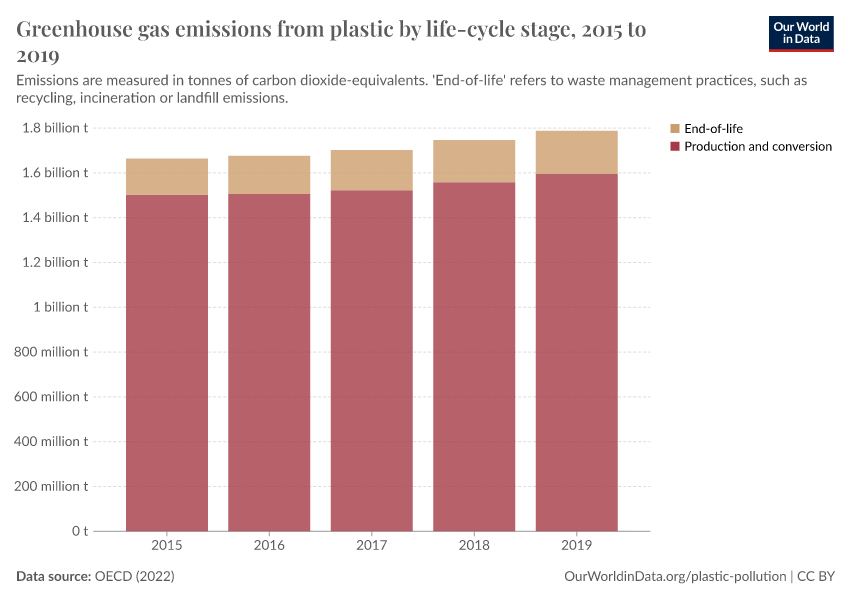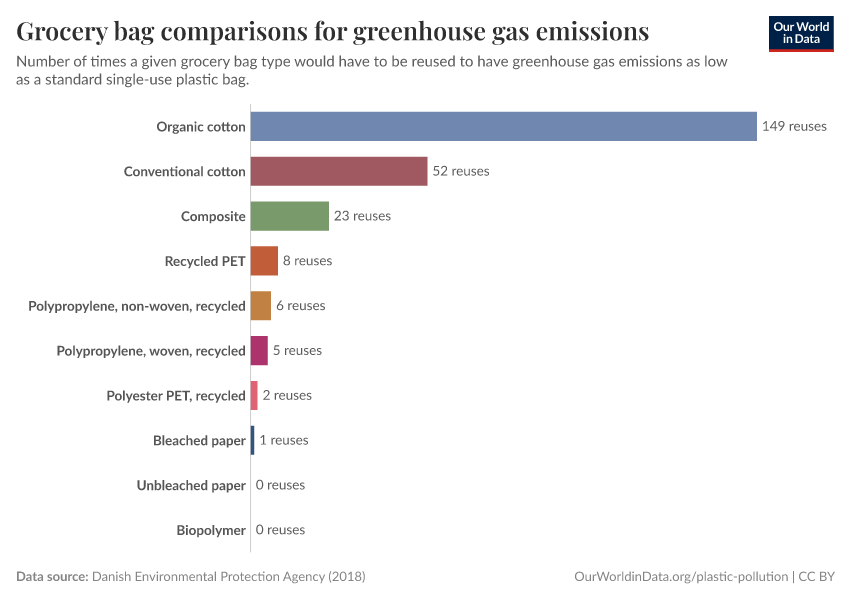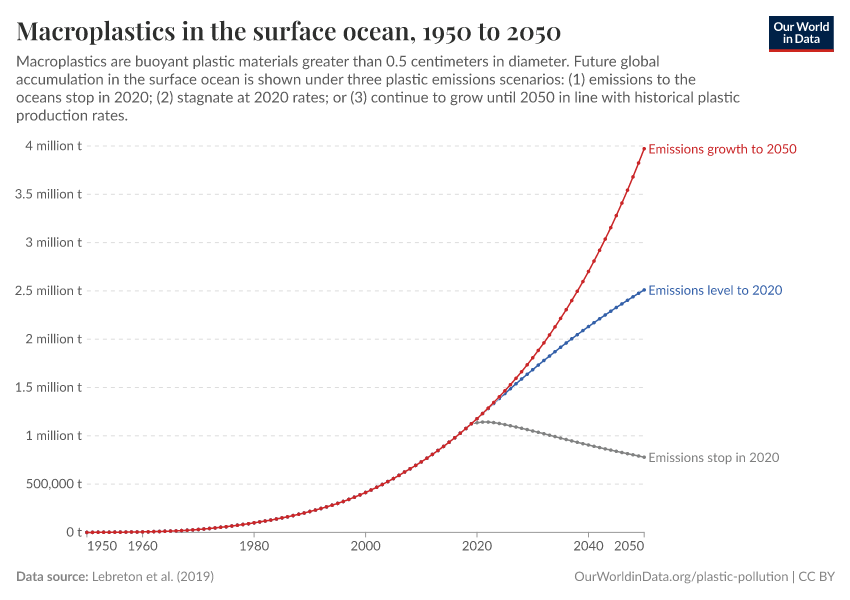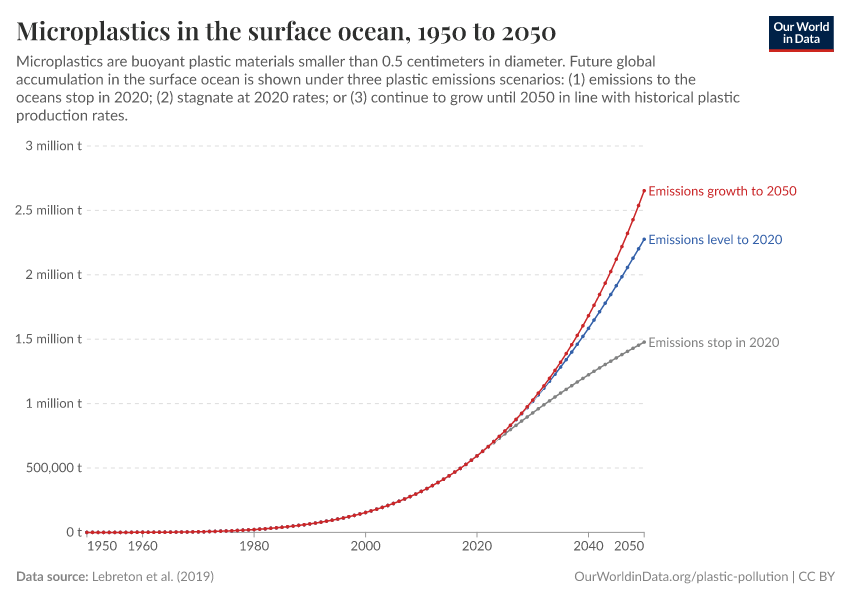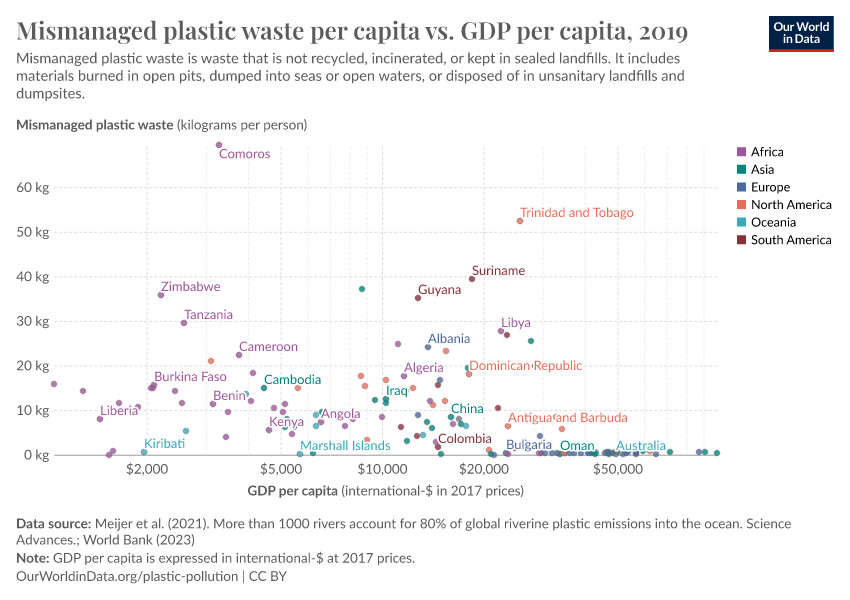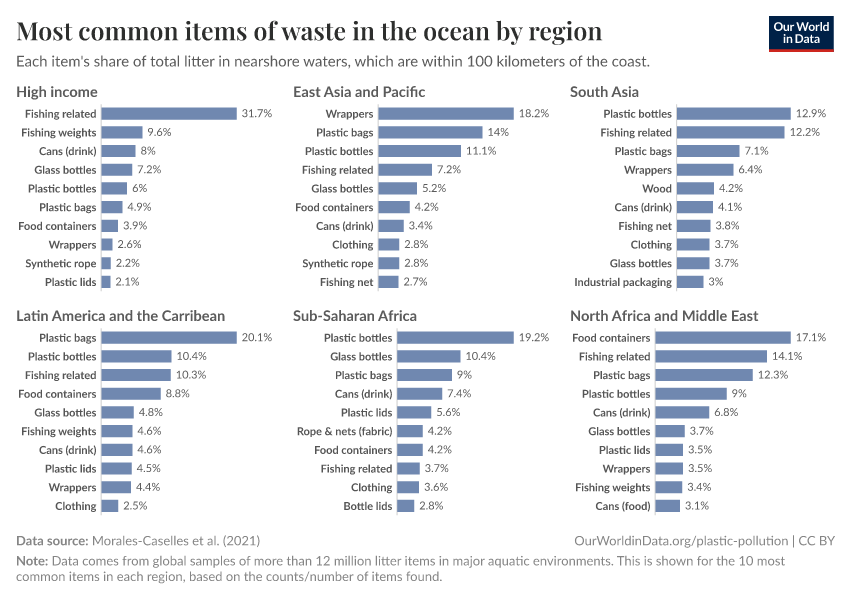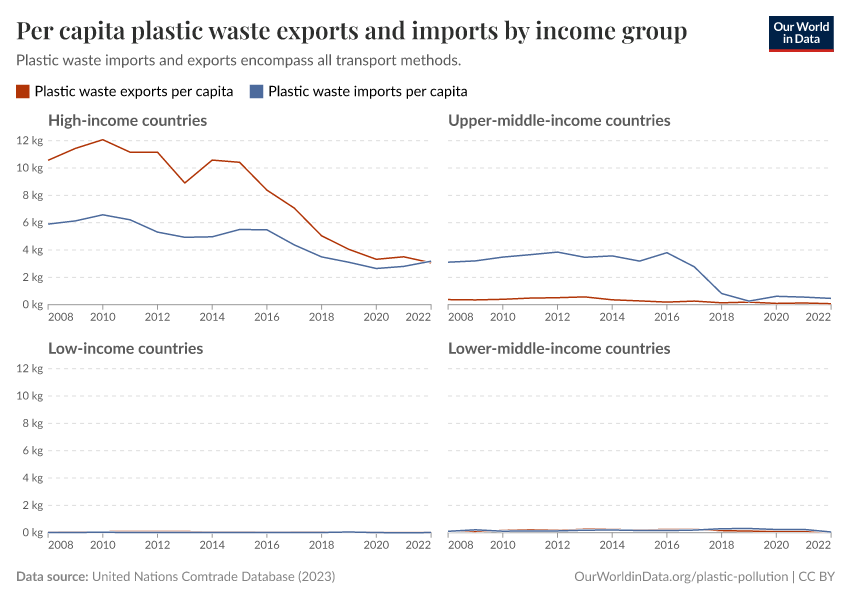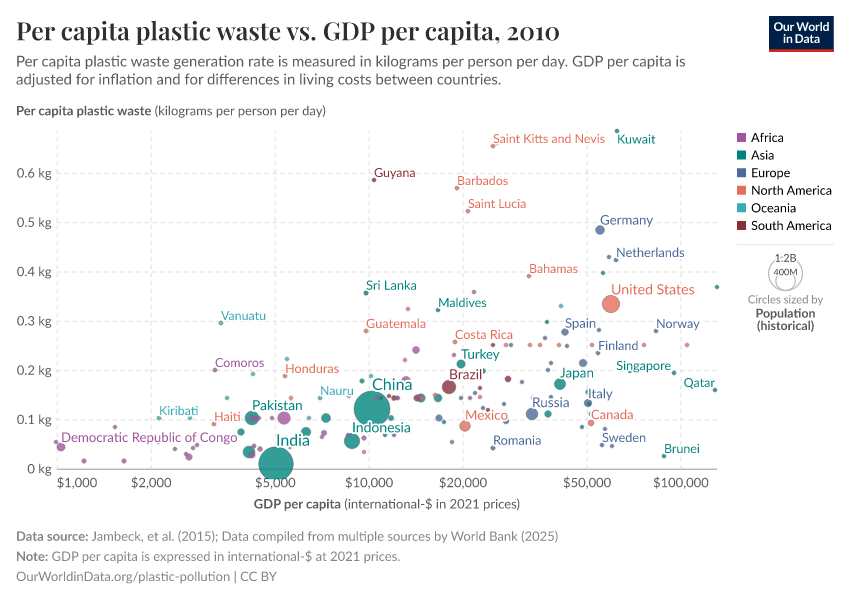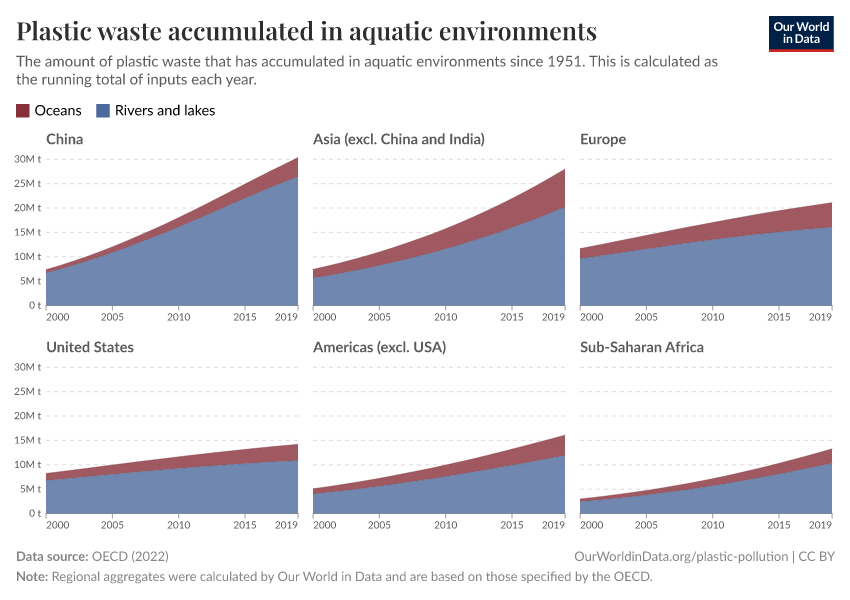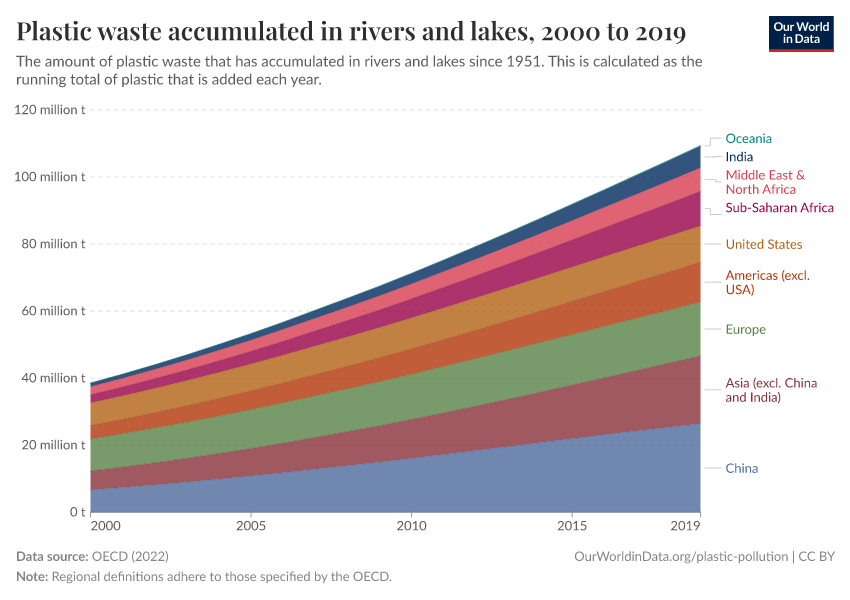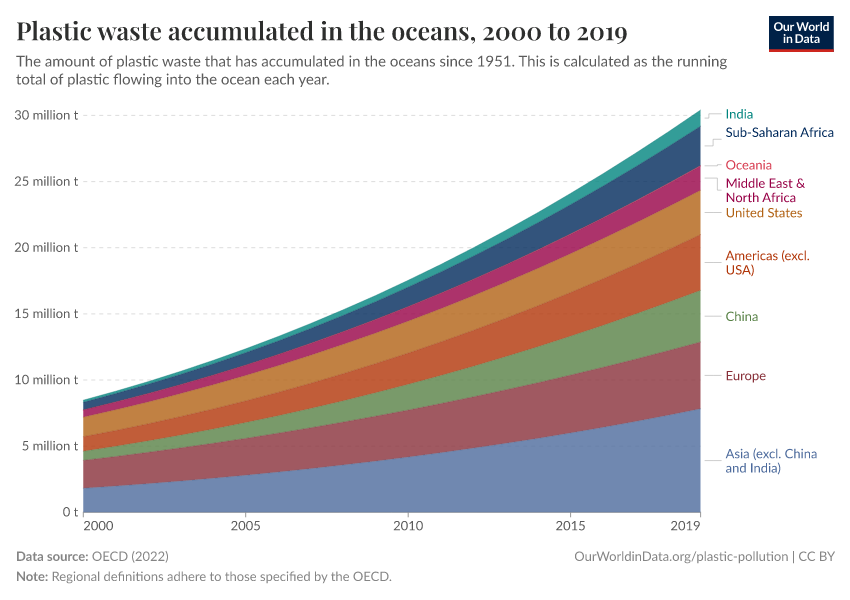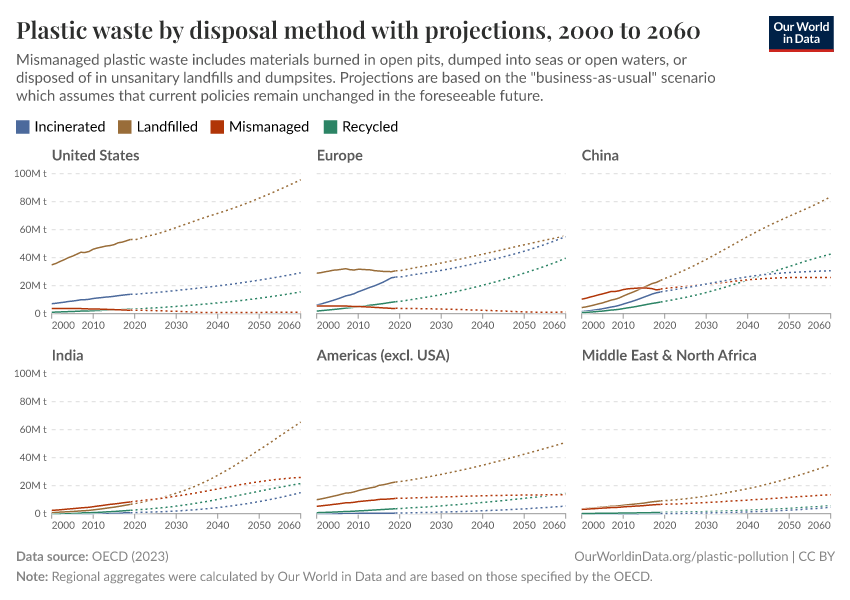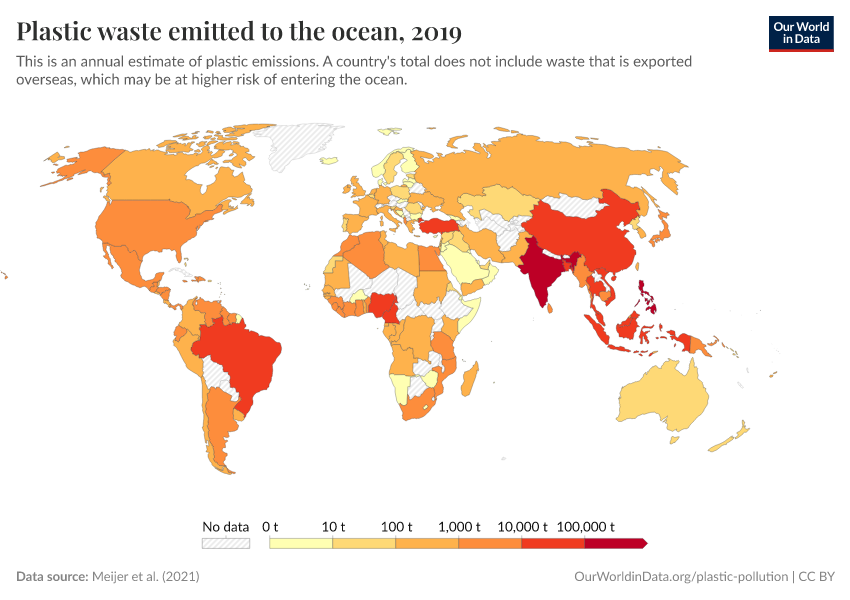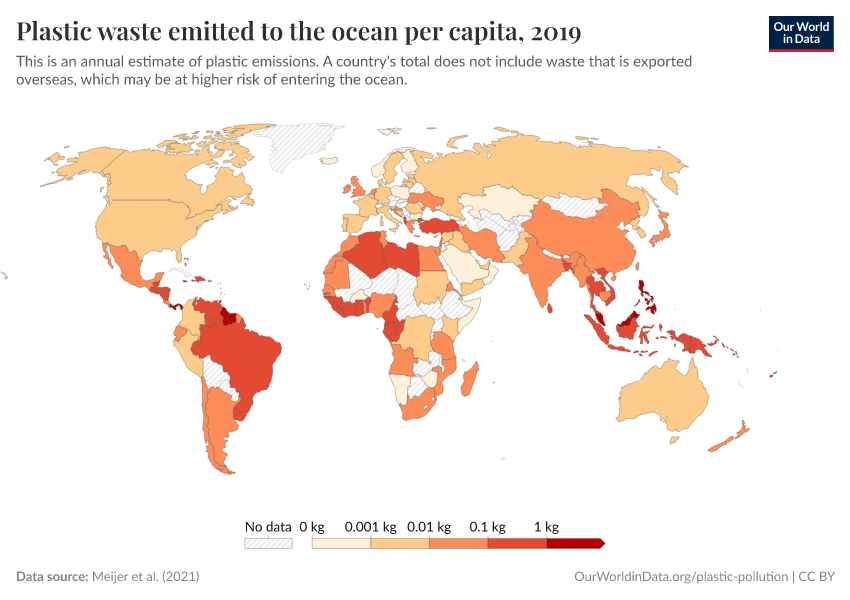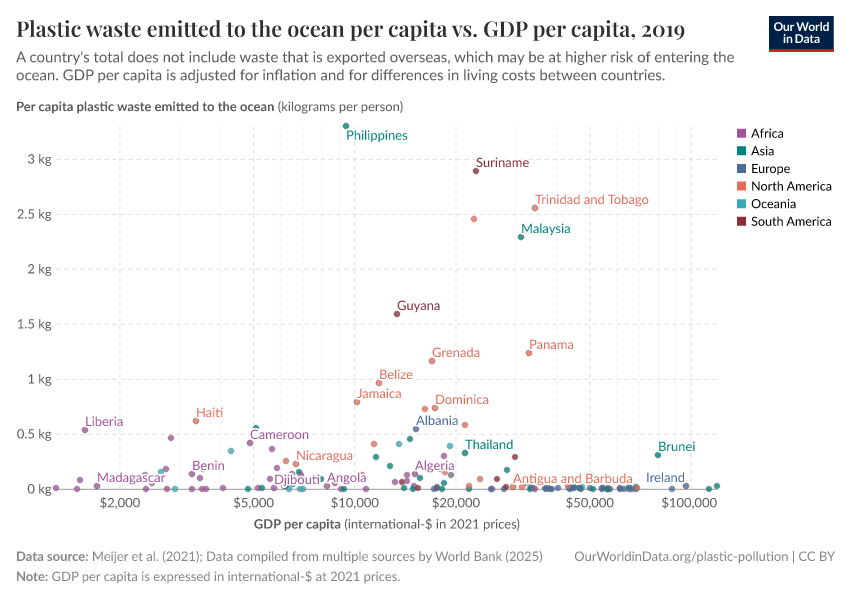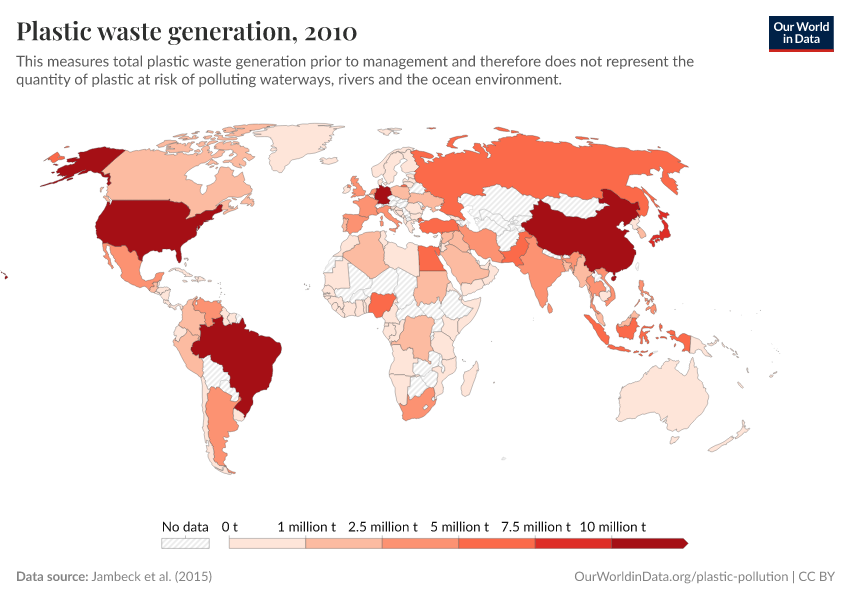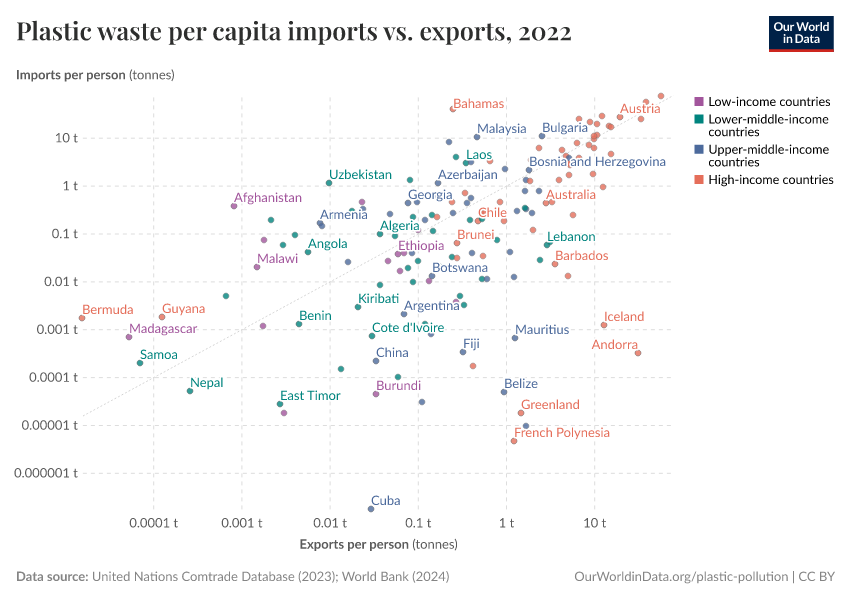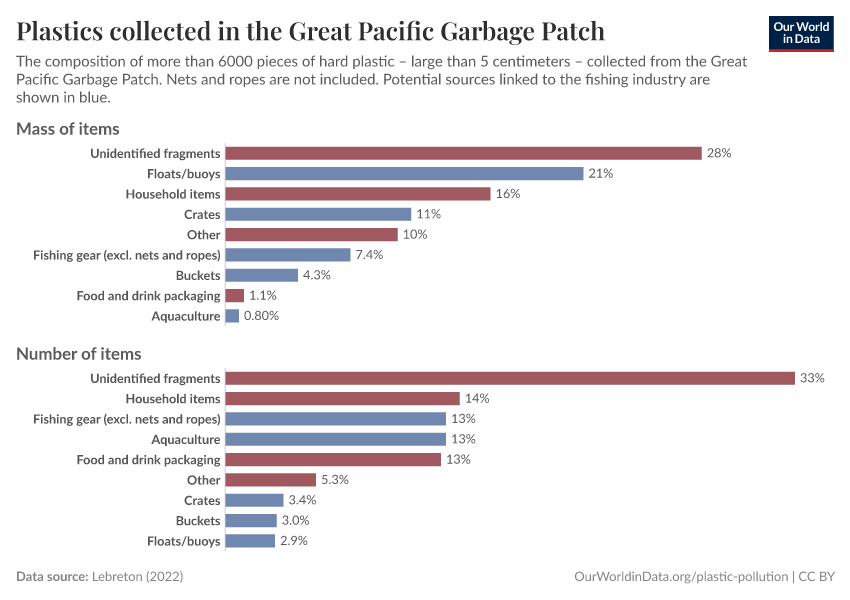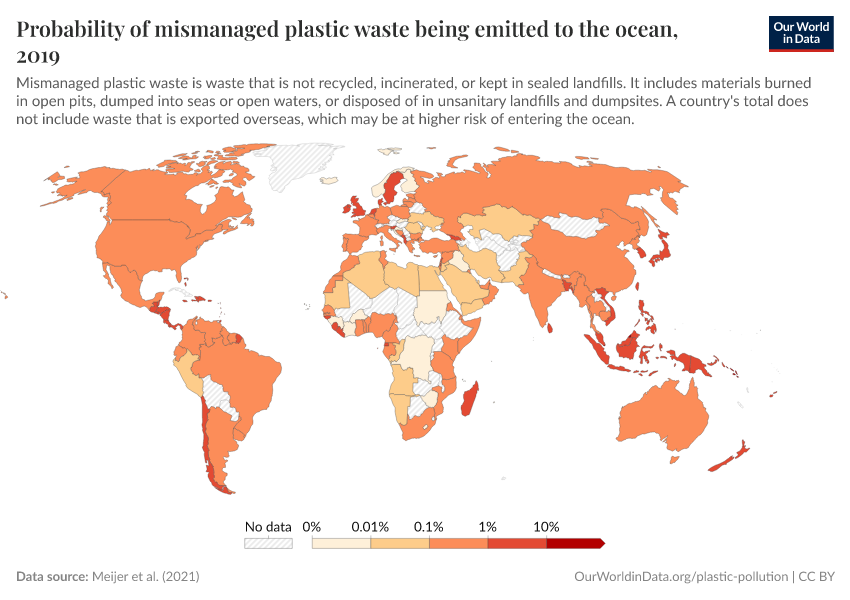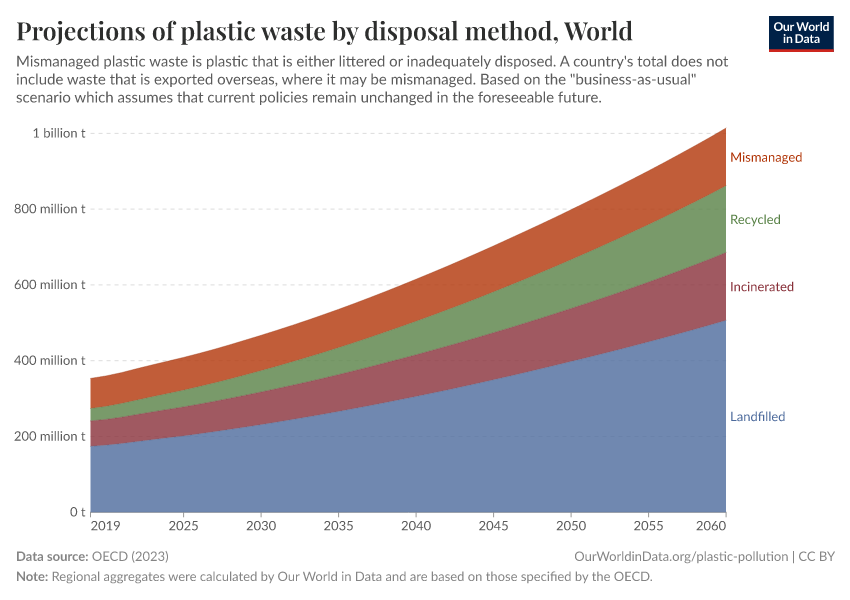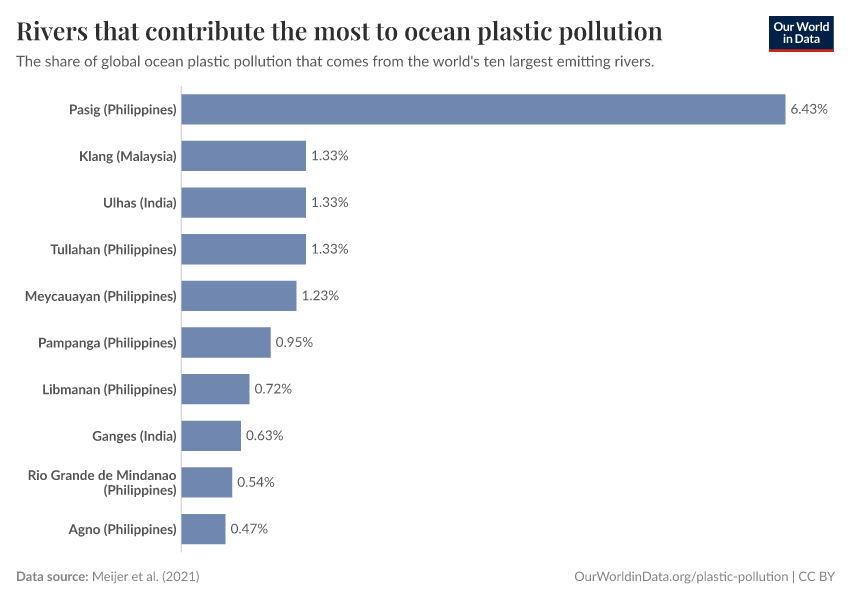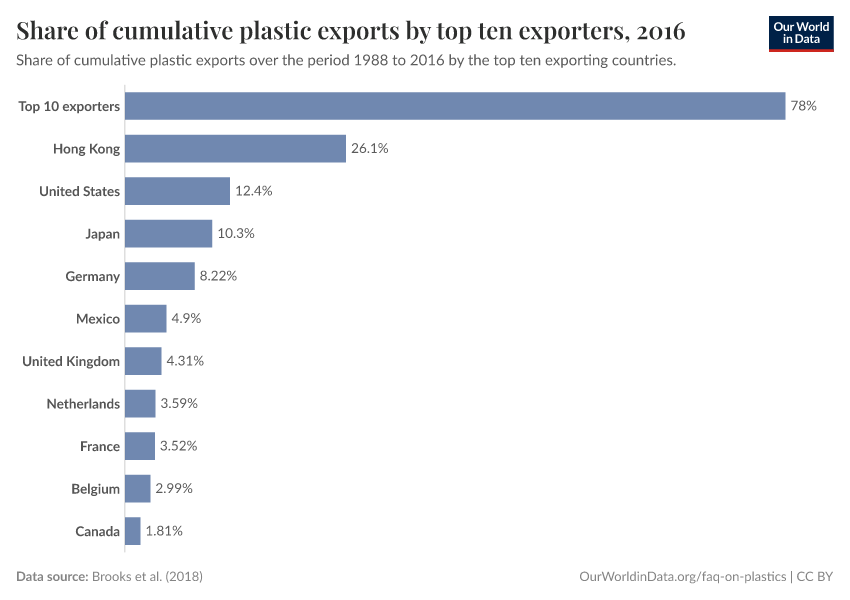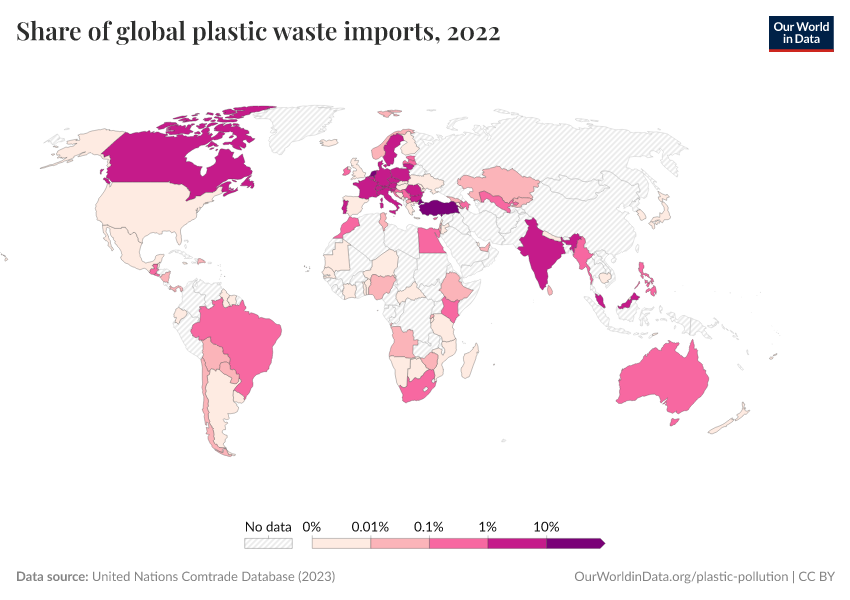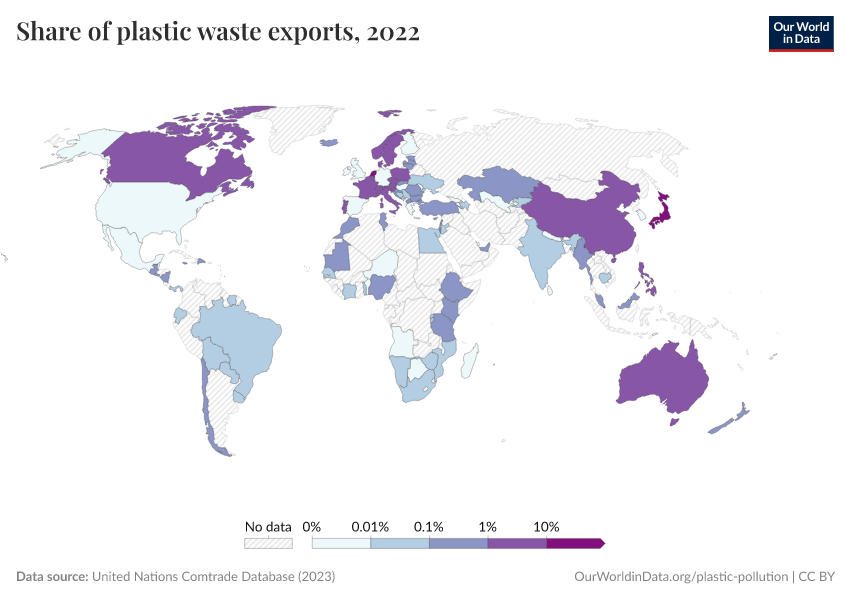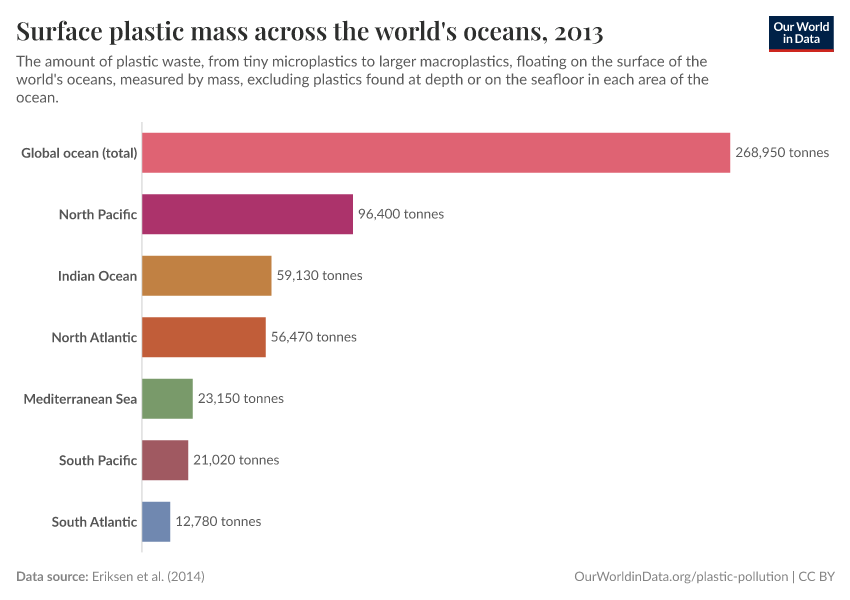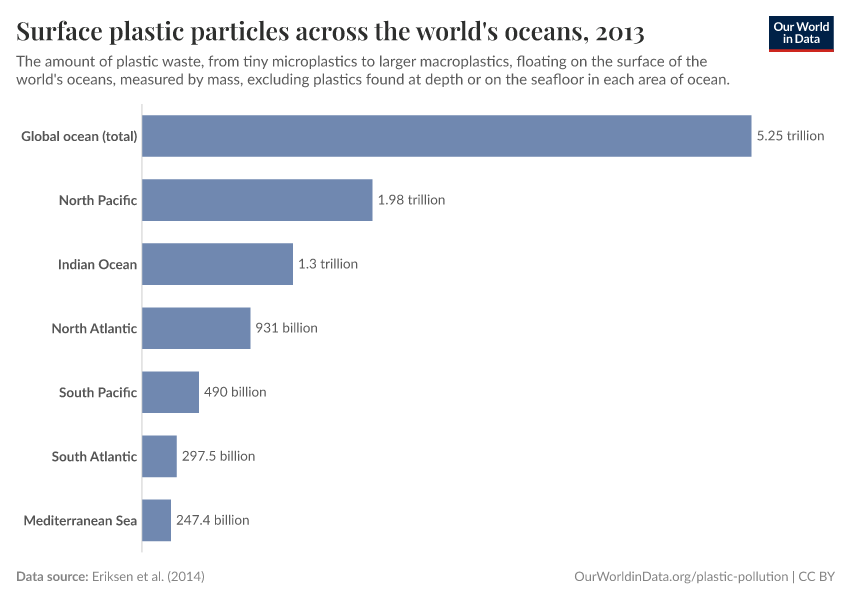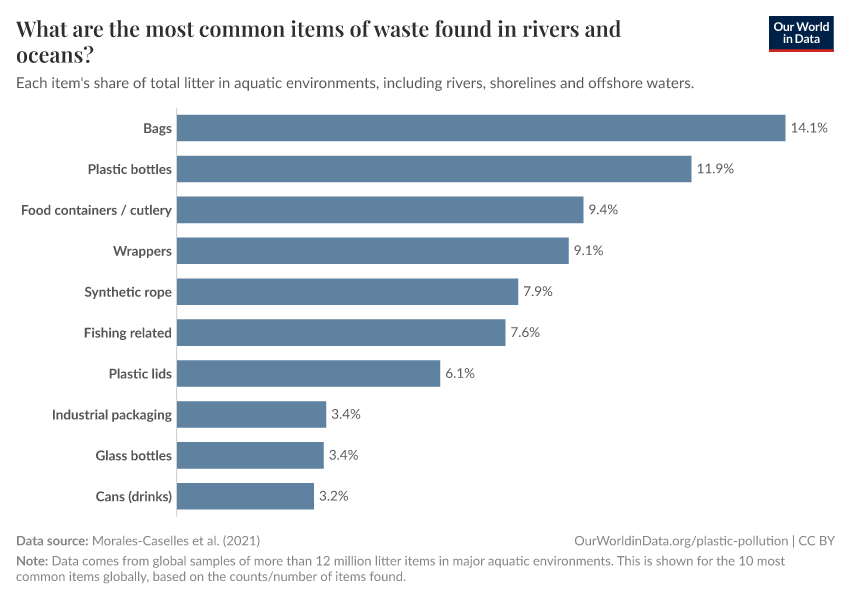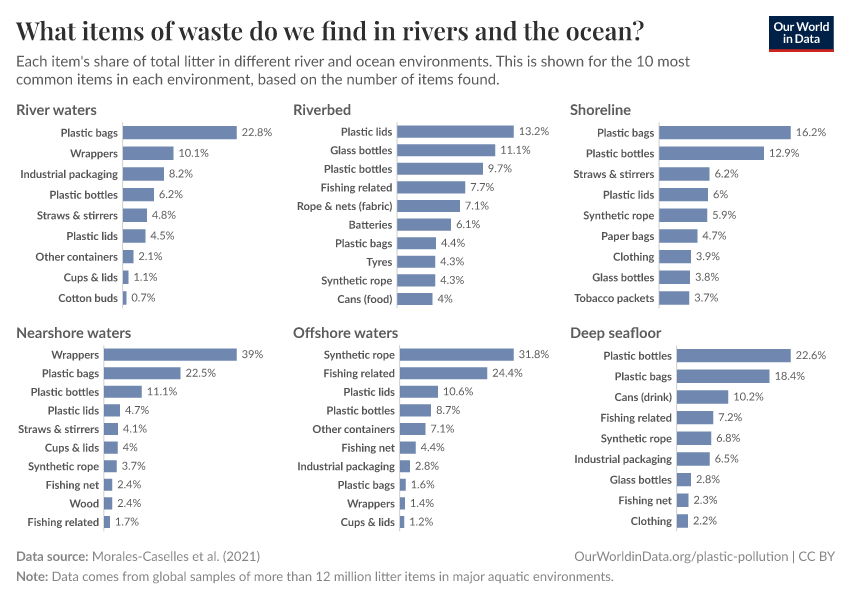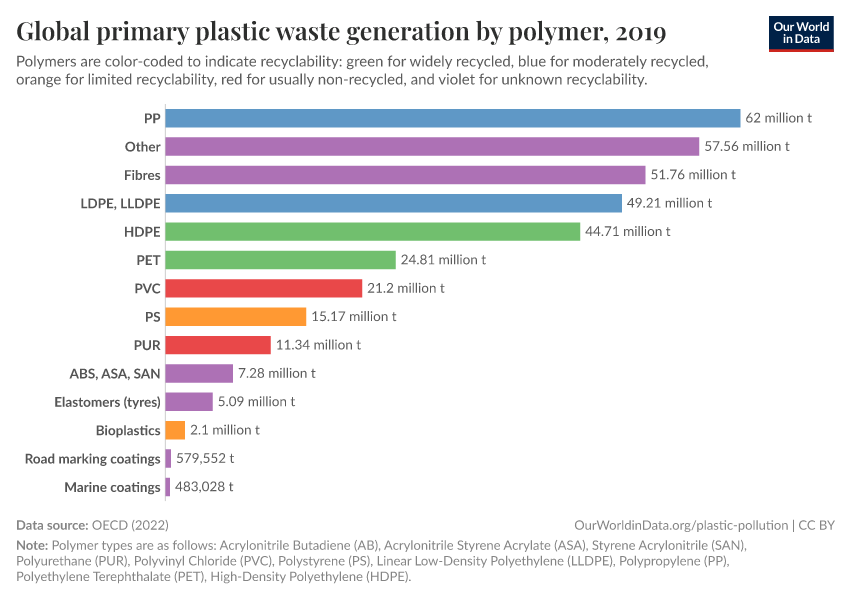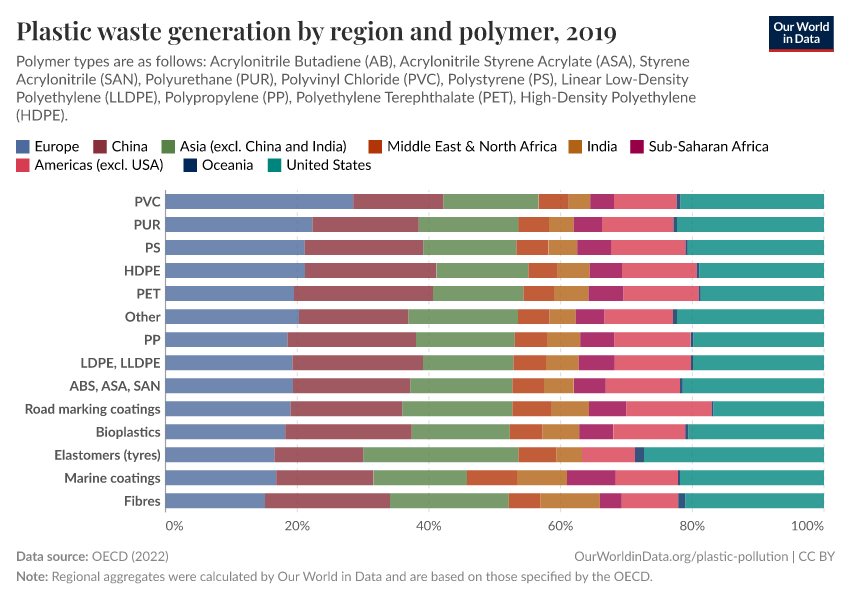Plastic Pollution
Plastic production has sharply increased over the last 70 years. In 1950, the world produced just two million tonnes. It now produces over 450 million tonnes.
Plastic has added much value to our lives: it’s a cheap, versatile, and sterile material used in various applications, including construction, home appliances, medical instruments, and food packaging.
However, when plastic waste is mismanaged — not recycled, incinerated, or kept in sealed landfills — it becomes an environmental pollutant. One to two million tonnes of plastic enter our oceans yearly, affecting wildlife and ecosystems.
Improving the management of plastic waste across the world – especially in poorer countries, where most of the ocean plastics come from – is therefore critical to tackling this problem.
On this page, you can find all of our data, visualizations, and writing on plastic pollution.
Research & Writing
October 05, 2023
How much plastic waste ends up in the ocean?
Around 0.5% of plastic waste ends up in the ocean. Most of it stays close to the shoreline.
May 01, 2021
Where does the plastic in our oceans come from?
Which countries and rivers emit the most plastic to the ocean? What does this mean for solutions to tackle plastic pollution?
October 11, 2022
Ocean plastics: How much do rich countries contribute by shipping their waste overseas?
Many countries ship plastic waste overseas. How much of the world’s waste is traded, and how big is its role in the pollution of our oceans?
Key Charts on Plastic Pollution
See all charts on this topicEndnotes
OECD (2022), Global Plastics Outlook: Economic Drivers, Environmental Impacts and Policy Options, OECD Publishing, Paris, https://doi.org/10.1787/de747aef-en.
Meijer, L. J., Van Emmerik, T., Van Der Ent, R., Schmidt, C., & Lebreton, L. (2021). More than 1000 rivers account for 80% of global riverine plastic emissions into the ocean. Science Advances, 7(18), eaaz5803.
OECD (2022), Global Plastics Outlook: Economic Drivers, Environmental Impacts and Policy Options, OECD Publishing, Paris, https://doi.org/10.1787/de747aef-en.
Meijer, L. J., Van Emmerik, T., Van Der Ent, R., Schmidt, C., & Lebreton, L. (2021). More than 1000 rivers account for 80% of global riverine plastic emissions into the ocean. Science Advances, 7(18), eaaz5803.
But this was not always the case: richer countries have been polluting the oceans for longer periods. If we look at accumulated stocks of plastics in the ocean, higher-income countries across Europe and North America play a larger role than they do today.
Meijer, L. J., Van Emmerik, T., Van Der Ent, R., Schmidt, C., & Lebreton, L. (2021). More than 1000 rivers account for 80% of global riverine plastic emissions into the ocean. Science Advances, 7(18).
Lebreton, L. C., Van der Zwet, J., Damsteeg, J. W., Slat, B., Andrady, A., & Reisser, J. (2017). River plastic emissions to the world’s oceans. Nature Communications, 8, 15611.
Cite this work
Our articles and data visualizations rely on work from many different people and organizations. When citing this topic page, please also cite the underlying data sources. This topic page can be cited as:
Hannah Ritchie, Veronika Samborska, and Max Roser (2023) - “Plastic Pollution” Published online at OurWorldinData.org. Retrieved from: 'https://ourworldindata.org/plastic-pollution' [Online Resource]BibTeX citation
@article{owid-plastic-pollution,
author = {Hannah Ritchie and Veronika Samborska and Max Roser},
title = {Plastic Pollution},
journal = {Our World in Data},
year = {2023},
note = {https://ourworldindata.org/plastic-pollution}
}Reuse this work freely
All visualizations, data, and code produced by Our World in Data are completely open access under the Creative Commons BY license. You have the permission to use, distribute, and reproduce these in any medium, provided the source and authors are credited.
The data produced by third parties and made available by Our World in Data is subject to the license terms from the original third-party authors. We will always indicate the original source of the data in our documentation, so you should always check the license of any such third-party data before use and redistribution.
All of our charts can be embedded in any site.




